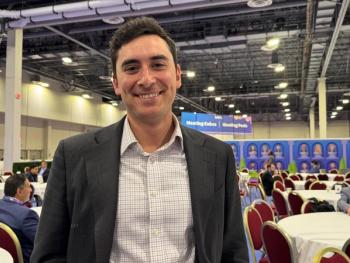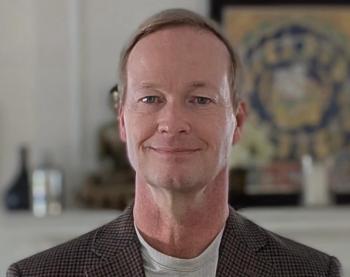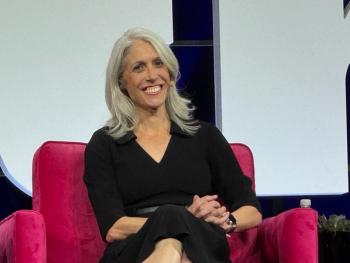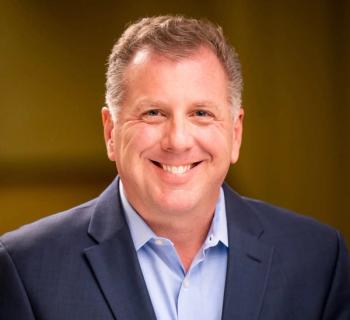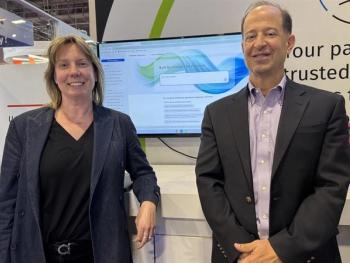
The Future of Health Tech in Reducing Physician Burnout
Geeta Nayyar, M.D., MBA: It’s funny, the other thing that we never really talk about is how as physicians, we actually love technology. The stethoscope, the MRI [magnetic resonance imaging], the CT [computed tomography] scans, the da Vinci robot, right? We actually dig technology.
Rasu Shrestha, M.D., MBA: Yes, especially radiologists. We love our cool technologies.
Geeta Nayyar, M.D., MBA: That’s all they’re about. Rheumatologists just like to think.
Heather Staples Lavoie: Yet in many offices, they still manually take a blood pressure and then go and key it into the system. They manually take a heart rate and they go key it into the system.
Geeta Nayyar, M.D., MBA: But my point in this is saying that this idea that the stupid doctor doesn’t want to use the technology or doesn’t want to get with the program is not fair, right? Because we love technology when it works.
Rasu Shrestha, M.D., MBA: Yes.
Geeta Nayyar, M.D., MBA: When it works the way we need it to and it helps us do what we need to, and when it doesn’t get in the way. So my stethoscope doesn’t get in the way of my visits. The MRI and the CT scan don’t get in the way of my visits. So I’d love to see health technology move into a place where physicians love technology, which we actually do at our core if it helps us do our job and it doesn’t interfere with the relationships.
Rasu Shrestha, M.D., MBA: What’s really interesting is with the everyday use of technology and the various things that we do, whether it’s ordering a cab, i.e. Uber, or booking a restaurant, there’s just so much adoption of technology because it just flows naturally into things. And then we go into a hospital system and everything is so darn artificial. Because technology is an impediment to care. And I always say that innovation done right makes technology invisible. So how do we make technology invisible? It’s not about technology. It’s about that workplace. It’s about that human interaction that we need to be having more.
And it’s really important for us to understand that we say time is money, but if you speak to physicians and say, “All right, what’s really important to you?” they’ll tell you, “What’s important to me is that I want to go home on time. And I want to put my kids to bed. I want to spend time with my children.” There are priorities that they have, and it’s not just around kids, but around things that drive and motivate them. Their families, their social circles, those are valuable. And if you’re able to feed to that and use technology to help with the things that need to get done, but not have technology be an impediment to care, I think we start moving in the right direction.
Geeta Nayyar, M.D., MBA: I agree.
Janae Sharp: Yes, I think we’ll pay for the things that matter. Not all of our financial decisions make sense, and technology should be able to help us make better health decisions, but it also should recognize the human aspect and say, “Let’s meet you where we are, where you are and improve your health.”
Geeta Nayyar, M.D., MBA: Well, thank you everyone for being part of the panel today. And as we close out, I’d love to get some final thoughts from each of you on this really important topic of physician burnout. Janae, why don’t we start with you?
Janae Sharp: No pressure. I think my final thought is that technology should be doing what technology is good at. And physicians should be able to do what they’re good at. And overall, our system is not really going in the right direction, but we have a lot of people who care about healing. And when technology can facilitate healing and facilitate better mental health, that’s when we know we’ve succeeded. And I think it’s going to happen. I think it’s going to happen because people have been fearless about not taking no for an answer, about having their voice be heard, and that connection is what’s going to heal us.
Rasu Shrestha, M.D., MBA: I absolutely agree with you, Janae. I think it’s important for us to bring the care back in healthcare. I think it’s important when it comes to physician burnout for us to call things out as they are. Right? Physicians on the ground, executive leadership at the top. We need to call things out as they are. I didn’t go into medical school to become a scribe. I didn’t go into medical school so that I could document and bill and type notes. I went to medical school to make a difference in the lives of fellow human beings so I could impact them at scale. That’s why I went to the medical school.
We’re in an environment today where we’re data rich and information poor. We have at our fingertips technologies and capabilities that can aid us in being more human in the very care that we’re providing. We need to step up the game. We need to address the issues head on. We need to make sure that technology becomes our greatest asset, not our most lethal liability.
Geeta Nayyar, M.D., MBA: Heather, how about you?
Heather Staples Lavoie: I’m an optimist, and I think sometimes it takes a crisis to call attention to a situation. And I think we’re at that point now where there are a lot of catalyzing forces that want to solve this. So, I think it’s been hidden for some time, and now that we’re finally at a tipping point where there is some very positive momentum in the right direction, I think that we’ll come to some strong solutions.
And I do think that despite the fact that we feel as if we’ve had technology around for a long time, we’re still at a pretty nascent stage as it relates to technology and healthcare. We’re still first or maybe second generation, and so there is a long way to go in terms of maturation. And so it will naturally get better as well. And if we combine the two, I do think that we can put some energy behind solving some of the challenges and advancing technology in a way that supports good process, and not necessarily just following regulations.
Geeta Nayyar, M.D., MBA: I agree with all of you. I’m really energized by the discussion and the fact that we’re even talking about it because I do think physician burnout is a crisis. And it’s a patient crisis, right? I think connecting the dots between burned out physicians with poor quality care for patients is really key.
And finally, it’s really clear that health technology has a role to play, for good or for bad. And I think it’s time that we start making strides in health technology with physicians as opposed to doing health technology to physicians.
Thank you all for your contributions to this discussion. On behalf of our panel, we thank you for joining us and we hope you found the Inside Digital Health Peer Exchange useful.
Navigate the digital transformation with confidence.
Reduce Physician Burnout

